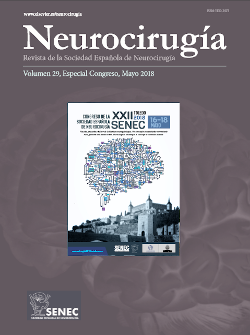C0556 - EVOLUTION OF OUR UNDERSTANDING OF RISK FACTORS FOR ANEURYSM RUPTURE: A COMPARISON BETWEEN ALLEGEDLY-HIGH-RISK UNRUPTURED ANEURYSMS AND THE ACTUALLY RUPTURED ONES
Hospital General Universitario Gregorio Marañón, Madrid, Spain.
Objectives: Analysis of main factors for intracranial aneurysms (IAs) rupture on a comparative study of a series of high-risk-according-to-literature unruptured intracranial aneurysms (UIAs) and that of ruptured (RIAs) treated in our center.
Methods: Retrospective review of prospective collected data of adult patients with diagnosis of RIAs or UIAs managed in our center in a 2-year period. Assessment of main risk factors for aneurysm rupture in both cohorts, including data on PHASES scores (developed for UIAs) to further evaluate and understand which IAs present with rupture in our context. Statistical significance considered for p < 0.05.
Results: A total of 74 patients with 118 IAs were found. 25 UIAs were considered for conservative management (59 years mean age, 5,1 mm size, 3 PHASES score), and 47 were defined as high-risk aneurysms and actively treated (52 years mean age, 6,6 mm size, 3 PHASES score). Regarding RIAs, 46 patients were diagnosed (55 years mean age, 7 mm size, 5 PHASES score). Comparison of main patients’ risk factors (previous hemorrhage, aneurysm multiplicity, hypertension, smoking, polycystic-kidney disease) among these groups didn’t yield a statistical difference for RIAs over high-risk UIAs or conservatively managed patients. On the other hand, comparison of main aneurysm risk factors (location, lobulations, dome/neck ratios) showed statistical difference of RIAs over high-risk UIAs, p < 0.05. However, specifically aneurysm size and age showed no difference between these groups, as many other well-known risk factors for rupture. Lastly, in a comprehensive review of PHASES scores, RIAs presented higher scores than high-risk UIAs, p < 0.05, as it should be expected.
Conclusions: Understanding main risk factors for IAs rupture poses significant controversies as many patients with RIAs in our series did not present significant differences over high-risk or even low-risk UIAs, turning UIAs management into a challenging and yet unsolved task.







